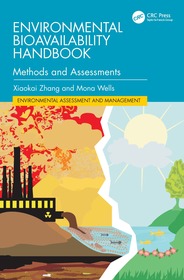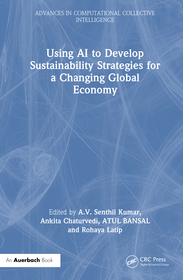
Environmental Bioavailability Handbook
Methods and Assessments
Series: Environmental Assessment and Management;
- Publisher's listprice GBP 165.00
-
78 828 Ft (75 075 Ft + 5% VAT)
The price is estimated because at the time of ordering we do not know what conversion rates will apply to HUF / product currency when the book arrives. In case HUF is weaker, the price increases slightly, in case HUF is stronger, the price goes lower slightly.
- Discount 10% (cc. 7 883 Ft off)
- Discounted price 70 946 Ft (67 568 Ft + 5% VAT)
Subcribe now and take benefit of a favourable price.
Subscribe
78 828 Ft

Availability
Not yet published.
Why don't you give exact delivery time?
Delivery time is estimated on our previous experiences. We give estimations only, because we order from outside Hungary, and the delivery time mainly depends on how quickly the publisher supplies the book. Faster or slower deliveries both happen, but we do our best to supply as quickly as possible.
Product details:
- Edition number 1
- Publisher CRC Press
- Date of Publication 18 December 2025
- ISBN 9781032404721
- Binding Hardback
- No. of pages374 pages
- Size 254x178 mm
- Language English
- Illustrations 14 Illustrations, black & white; 70 Illustrations, color; 2 Halftones, black & white; 46 Halftones, color; 12 Line drawings, black & white; 24 Line drawings, color; 24 Tables, black & white 700
Categories
Short description:
This practical guide on environmental bioavailability explains the importance of its use and includes specific methods for testing bioavailability of pollutants in the atmosphere, water bodies, soils, and sediments. Detailed methods and techniques are given to measure bioavailability and includes a case study for each approach.
MoreLong description:
Bioavailability processes are essential for assessing environmental risk, environmental health, and decision-making in environmental management. This practical guide on environmental bioavailability explains its importance and includes specific methods for testing the bioavailability of pollutants in water (freshwater and seawater), soils, and sediments. Detailed methods and techniques are given to measure and assess bioavailability using biotic methods, abiotic methods, and modeling. Case studies help environmental researchers and practitioners understand the applications of bioavailability in field and laboratory.
This book contributes to a deeper understanding of the role of environmental bioavailability in contemporary environmental science in the following ways:
- Provides information on the importance of environmental bioavailability of pollutants.
- Explains, in a “how-to” manner, the use of bioavailability in the context of environmental risk assessment and environmental management decision-making.
- Includes areas of applicability, optimum conditions, and pros and cons for bioavailability methods provided.
- Summarizes state-of-the-art in modeling environmental bioavailability and discusses current best practices.
- Includes case studies illustrating the assessment of bioavailability using different approaches.
This handbook is intended for professionals, researchers, academics, environmental practitioners, and policymakers working in the areas of environmental risk assessment, environmental health, environmental management, sustainability, and related fields. It is also an excellent resource for students studying in any of these fields and looking for a foundational text on environmental bioavailability.
More
Table of Contents:
Secion 1: Background. 1. Bioavailability and Influencing Factors. 2. Terms and Definitions. 3. Sample Integrity and Avoiding Contamination. 4. Guidance Notes on Quality Assurance and Quality Control. 5. Standard Methods for the Instrumental Analysis of Heavy Metals and Organic Compounds and Ancillary Procedures. Section 2: Biotic Methods: Measurement of “True Bioavailability”. 6. Environmental Monitoring of Bioavailability Using Caged Bivalve Mollusks. 7. Using Worms for the Measurement of Pollutant Bioavailability. 8. Assessing the Bioavailability of Pollutants using Macrophytes. 9. Measuring Bioavailability Using Whole-Cell Bioreporters. Section 3: Abiotic Methods: Measurement of Chemoavailability using Chemical Proxies. 10. Chemoavailability of Pollutants Determined by Diffusive Gradients in Thin Films. 11. Tenax Extraction as a Simple Method to Determine the Chemoavailability of Organic Pollutants. 12. Using Chelating Resins for the Measurement of Heavy Metal Bioavailability. 13. Permeation Liquid Membranes as a Tool for Evaluation of Heavy Metal Chemoavailability. Section 4: Modeling. 14. Introduction to Modeling Bioavailability. 15. Speciation and Biotic Ligand Modeling. Section 5: Case Studies on the Assessment of Bioavailability. 16. Case Study: Evaluating Organ-ic Diffusive Gradients in Thin-Film Devices as Proxies to Measure Bioavailability of Methamphetamine in Zebrafish. 17. Case Study: Assessing a Two-in-One Whole-Cell Bioreporter Approach for Bioavailability and Toxicity of Cadmium and Lead.
More

Soil Degradation, Desertification and Restoration: Application of Geospatial Technology and Modeling







